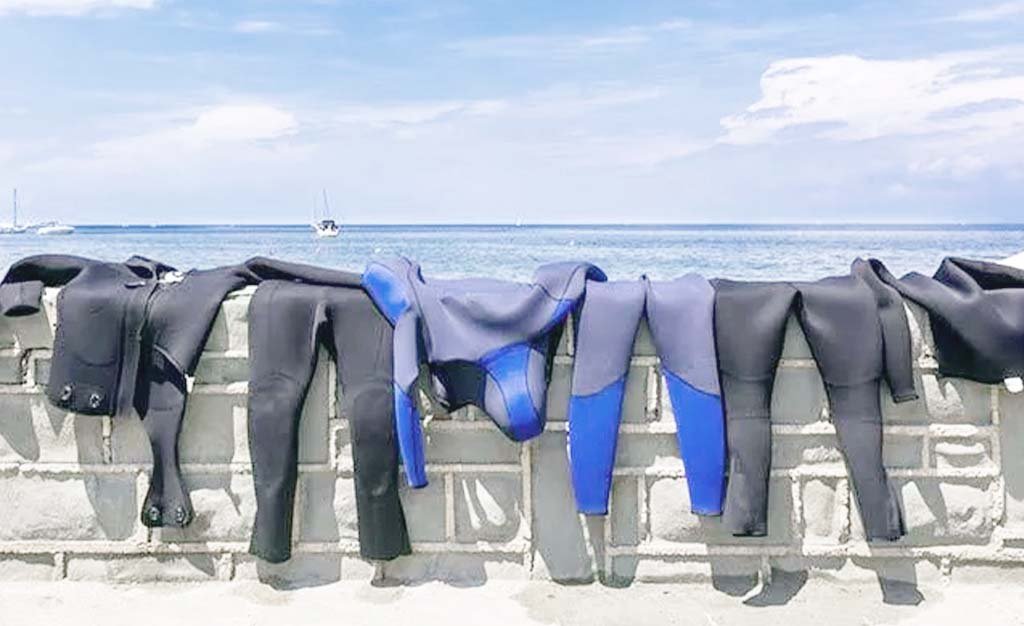As an Amazon Associate I earn from qualifying purchases.
This post contains affiliate links.
Wetsuits are a surfer’s second skin, offering protection and insulation against the elements while riding the waves. However, after an exhilarating session in the sea, proper maintenance is crucial to ensure your wetsuit remains in top condition. In this guide, we’ll delve into the essential steps and techniques on how to clean a wetsuit effectively.

From removing salt and sand to preventing odors and maintaining flexibility, mastering the art of wetsuit care will not only prolong its lifespan but also enhance your surfing experience. So let’s dive in and discover the secrets to keeping your wetsuit fresh and functional for countless sessions to come.
Understanding the Importance to Clean a Wetsuit:
Before diving into the cleaning process, it’s essential to understand why keeping your wetsuit clean is so important. Over time, salt, sand, sunscreen, and body oils can accumulate on the fabric, leading to unpleasant odors, bacteria growth, and deterioration of the material. A dirty wetsuit not only affects its lifespan but can also compromise its insulation properties, leaving you cold and uncomfortable during your water adventures.
Preventing Damage:
Cleaning your wetsuit regularly not only removes dirt and grime but also helps prevent damage to the fabric. Saltwater and chlorine can be particularly harsh on neoprene, causing it to become stiff and brittle over time. By rinsing off these substances after each use and giving your wetsuit a thorough cleaning periodically, you can extend its lifespan and maintain its flexibility for optimal performance.
Step-by-Step Guide to Clean Your Wetsuit:
Rinse Thoroughly After Each Use:
After a day of surfing or diving, it’s essential to rinse your wetsuit thoroughly with fresh water as soon as possible. This helps remove salt, sand, and other debris that can cause damage and odors if left to dry on the fabric. Turn your wetsuit inside out and use a hose or shower to rinse both the outside and inside thoroughly.
Use a Wetsuit Cleaner:
For deeper cleaning, invest in a wetsuit-specific cleaner designed to remove salt, chlorine, and organic residues without damaging the neoprene. Follow the instructions on the cleaner carefully, diluting it with water as recommended. Gently hand wash your wetsuit with the cleaner, paying extra attention to areas prone to odor buildup, such as the armpits and crotch.
Avoid Harsh Detergents and Hot Water:
While it may be tempting to use household detergents or hot water to clean your wetsuit, these can actually do more harm than good. Harsh chemicals and high temperatures can degrade the neoprene and affect its elasticity, leading to premature wear and tear. Stick to mild, wetsuit-specific cleaners and lukewarm water to preserve the integrity of your gear.
Rinse Thoroughly Again:
Once you’ve finished washing your wetsuit with the cleaner, rinse it thoroughly once more with fresh water to remove any residue. Ensure that all traces of the cleaner are washed away, as leftover chemicals can irritate your skin and cause discomfort during your next session in the water.
Hang to Dry Properly:
After cleaning, hang your wetsuit to dry in a well-ventilated area away from direct sunlight. Avoid hanging it by the shoulders, as this can cause stretching and distortion of the fabric. Instead, use a wide, padded hanger or lay the wetsuit flat on a drying rack. Ensure that it is completely dry before storing it away to prevent mold and mildew growth.
Maintaining Your Wetsuit for Longevity:
In addition to regular cleaning, there are several other steps you can take to prolong the life of your wetsuit:
Store it properly:
Avoid folding or creasing your wetsuit when storing it, as this can lead to permanent wrinkles and weak points in the fabric. Instead, hang it or lay it flat in a cool, dry place away from direct sunlight.
Avoid contact with sharp objects:
Be mindful of where you lay your wetsuit to avoid punctures and tears from sharp objects such as rocks, shells, or fingernails.
Repair damage promptly:
If you notice any tears, holes, or other damage to your wetsuit, repair them promptly using a wetsuit repair kit or neoprene glue. Ignoring small issues can lead to more significant problems down the line.
In conclusion, mastering the art of how to clean a wetsuit is essential for every surfer who values both performance and longevity. By following the simple yet effective techniques outlined in this guide, you can ensure that your wetsuit remains a reliable companion on countless surfing adventures.
Remember, proper maintenance not only enhances the lifespan of your wetsuit but also contributes to a more enjoyable and comfortable surfing experience. So, take the time to care for your wetsuit, and it will reward you with optimal performance in the water for years to come.
Related Articles:
- Best Kids Wetsuits
- Best 5/4 Hooded Fullsuits for Women
- best 5/4 wetsuit for women
- best cold water wetsuit for men’s
- best cold water wetsuits for women
- Best Wetsuit Tops for Men
- Best Wetsuit Gloves for Your Water Adventures
- best 5mm wetsuit for women
- Best 5mm wetsuit for men
- best 3/2 wetsuit for women
- best 3/2 wetsuit for men
- Best 4/3 Wetsuits for Women
- Best 4/3 Wetsuit for Men
As an Amazon Associate I earn from qualifying purchases.
Leave a Reply